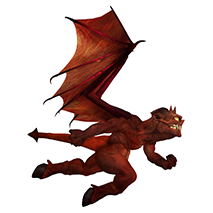This Follows on from: Characters on the Couch (Part 14). The first part can be found at: Characters on the Couch (Part 1).
So why use Archetypes?
As a writer there are several advantages to using archetypes when designing characters. Archetypes give characters personalities that readers can easily identify with. They make characters memorable by making them stand out (what marketers would call providing strong differentiation). They also provide obvious areas for minor conflict between player characters at a philosophical level.
Archetypes from the drivers opposed to those a character is pursuing and shadow forms of their own archetype make excellent adversaries for a character. If you want to tempt a character their potential dark side will reveal a weakness that you can attack.
By knowing your character’s archetypes you can develop stories that have stronger plots because you have a clearer understanding of their motivation. Also because you know their motivation you will find it easier to their reaction to situation should you find your original story and plot going off-piste.
Not every character needs to fit an archetype. Many lesser characters fall short of being archetypical. Some are pulled towards more than one driver and can never fit an archetype. Some are just bland, unmemorable bit players and some may be there to provide contrast to an archetypical character by casting them into relief through their slip from being archetypical to being an also-ran.
At their simplest level they are useful for the more clear-cut style of writing, often associated with heroic styles. They can also be useful for more complex characterisation especially when the changing drives and internal conflicts come into play. In TV’s West Wing an ongoing sub-plot was centred on President Bartlett’s struggle between the different archetypes he might be presented as and the difficulty this caused him.
In the end this is just a tool. If it’s getting in the way of having fun throw it out.

Leave a Comment